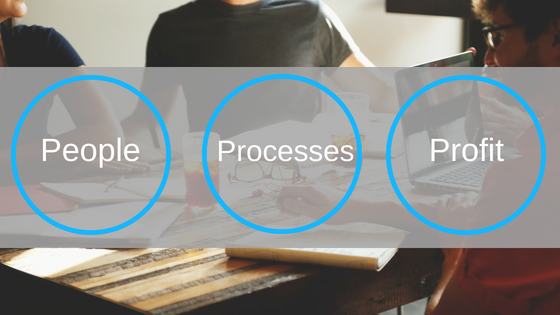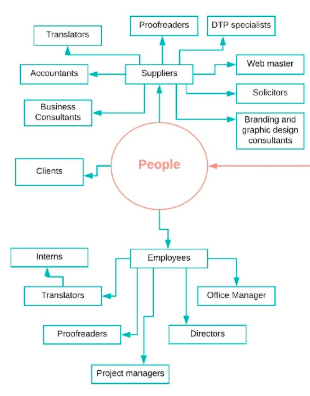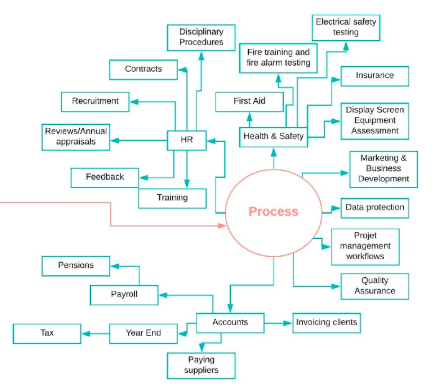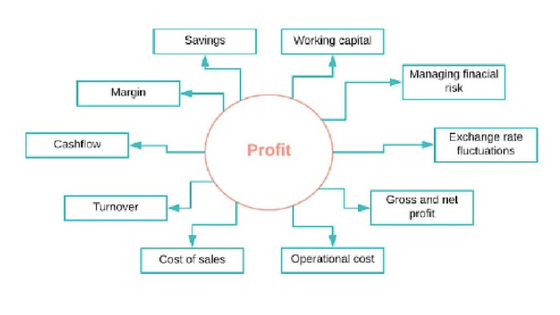
Blog
Contents
Machine Translation Report
What is the optimal MT Engine for you? Find out in the latest MT Report by Memsource.

By Anja Jones
Over the last eight years, Anja Jones Translations has grown from just me working as a freelance translator from my kitchen table to a company that currently employs 11 full-time staff and well over 100 freelance translators. Translation companies come in all shapes and sizes but I’d like to share my own experience of setting up and running a smaller, owner-managed LSP (Language Service Provider), and provide an insight into the challenges we faced, and still face, while continuing to grow the business.
Starting Out
![]() AJT was founded in June 2010 when I was working as a freelancer and advertising my translation services to local hotels in the area and on Proz.com. It wasn’t long before Sarah, my friend and former colleague, and I started translating for a major translation platform and we eventually grew into project managers for the French and German teams.
AJT was founded in June 2010 when I was working as a freelancer and advertising my translation services to local hotels in the area and on Proz.com. It wasn’t long before Sarah, my friend and former colleague, and I started translating for a major translation platform and we eventually grew into project managers for the French and German teams.
By the autumn of that same year, we organized our first large translation project of 40,000 words into French and German with a lead-time of three weeks - we had to quickly recruit and evaluate freelance translators to help us meet this ambitious deadline.
That was the start of a few whirlwind years, during which Sarah and I not only translated and proofread our own work but also project managed an entire team of freelancers. And of course, on top of the daily project work, I dealt with all company matters: accounting, sales, business development, etc. – everything that a freelance translator would do, but on a much larger scale.
Many of the things I’ve learned about setting up and running a translation agency can be separated into three distinct categories: People, Processes, and Profit.
People
Those first few years were, without doubt, the most exciting, but they were also the busiest and, at times, stressful of my life. I wouldn’t change it for the world - the only regret I have is not employing people sooner. We had no guarantee that the level of work would remain the same, but at the same time, we couldn’t continue as we were.
 In 2014, we finally took the plunge and employed our first in-house translator and project manager and over the next few years, we took on project managers, in-house translators, and an office administrator to manage the ever-growing demand for our translation services.
In 2014, we finally took the plunge and employed our first in-house translator and project manager and over the next few years, we took on project managers, in-house translators, and an office administrator to manage the ever-growing demand for our translation services.
Find the right people that share your vision, ethos, and work ethic
I have learned that it’s absolutely crucial to find the right people who share your vision, your values, and your ethos. It might sound obvious but succeeding comes down to asking the right questions and really listening to the applicant. When you do find the right people who share your values and visions, it’s absolutely exhilarating and energizing – work becomes a truly fun place to be and you can achieve so much more together, driving the company forward as a team.
Be clear about the employee’s role and find the right people
In the early days, I made the mistake of trying to make the role fit the candidate, rather than finding the right candidate for the role. You need a laser-sharp focus to find the people that meet the needs which you have identified within the company. Making promises and compromises to please a potential candidate just to bring them onboard only leads to disappointment further down the line, when you realize that your promises weren’t realistic and the compromises are counter-productive to propel your company forward.
Look for people who compliment your skills and abilities
Having people around me who I trust implicitly and who are able to give me their honest opinion about how I’m doing has been incredibly valuable. It can be hard to recognize certain behaviors or patterns in yourself, and it can also be hard to hear constructive criticism, right? Over the years, I’ve had a lot of heated discussions with my husband – as a co-director of the company and with extensive experience in the corporate world, he’s not shy about telling me his view. But those discussions have sparked improvements and changes in the company, from seeking out professional business coaching to reviewing processes and policies.
Understand that your own role will change
As I moved from the role of translator/editor/project manager into the role of a people manager, I realized just how much my own personality affected my management style and my decisions. I naturally shy away from conflict and uncomfortable conversations, and I really had to build up that courage and confidence to have the more difficult conversations. As a boss, you have a big responsibility to your employees, so you can’t hide under a rock and hope things will get better on their own.
Processes
 As the number of our in-house staff has grown, so has the complexity of our internal processes, and I have tried to list all the processes and procedures we have put in place in our own company (see the figure here). It’s a non-exhaustive list, but it shows just how many additional processes are needed once you move from employing only freelance translators to a team of in-house staff.
As the number of our in-house staff has grown, so has the complexity of our internal processes, and I have tried to list all the processes and procedures we have put in place in our own company (see the figure here). It’s a non-exhaustive list, but it shows just how many additional processes are needed once you move from employing only freelance translators to a team of in-house staff.
In hindsight, I feel like I was pretty inexperienced when I stepped into the role of ‘employer’, but then again, if you let the thought that you don’t know everything stop you, then you might end up not ever doing anything new or exciting.
Get clued up about employment law
Human Resources (HR) in particular is a big beast to tackle, from setting up the initial employment contracts and disciplinary procedures to putting in place a structure for regular one-to-one reviews and annual appraisals. There were several areas where we involved external experts to make sure we were compliant with UK law, including setting up pensions for all our employees, fire risk assessment, electrical equipment testing, and the list goes on. What responsibilities do you have as an employer with regards to holiday, sickness, health insurance, public liability insurance, pensions etc? Are you able to fulfill all the statutory rights that employees have in your country? These are important issues that need to be sorted out.
Plan your processes
As you take on staff, your internal process will increase and become more complex. Clearly map out and formalize those processes and identify any additional costs associated with them.
For some of these processes, they are one-off tasks with an initial set-up cost and then you don’t need to worry about them again – the process is implemented and simply followed going forward. Other processes are more fluid and are constantly reviewed to see if we can streamline and improve them, especially with project management and payments.
Choose the right CAT tool
Part of our current challenge is that we now need more robust tools and sophisticated features to streamline and automate our operations, but also need to keep an eye on our overhead.
We’ve always been big believers in simple, intuitive, and efficient CAT tools. Eighty percent of our daily project work takes place on one platform where we provide translations for their customers. All our direct client work, on the other hand, takes place in Memsource.
While both platforms operate very different pricing models (one is free for us as the agency, while we pay a monthly subscription to Memsource), they have one important thing in common: accessibility. A translator can work on either platform regardless of what operating system or browser they use. There are no software requirements, no subscriptions, no updates, no payments – as long as the translator has a stable internet connection, they are good to go. And that’s really important to us and in turn hugely beneficial to our clients. It means that we can recruit translators based on their linguistic merit, rather than their computer equipment or their willingness to fork out for a particular type of software.
Both platforms are very easy to use from an agency perspective, while still offering all the tools we need (translation memory, glossary, commenting, quality assurance etc.), allowing us to work very efficiently and process larger volumes of work than would be possible with more complex CAT tools.
Profit
 Staying profitable as you grow and ensuring that your overheads don’t spiral out of control as you take on staff is so important. When we were just working with freelancers, the calculations were quite simplistic: take what your clients pay you, subtract what you pay your freelancers, and you are left with your gross profit. But as you make the move to becoming an employer, your cost structure starts to look a bit more complex.
Staying profitable as you grow and ensuring that your overheads don’t spiral out of control as you take on staff is so important. When we were just working with freelancers, the calculations were quite simplistic: take what your clients pay you, subtract what you pay your freelancers, and you are left with your gross profit. But as you make the move to becoming an employer, your cost structure starts to look a bit more complex.
Cashflow forecasting
Calculate how much an employee would cost you - include the salary as well as associated costs such as taxes and insurances, an initial investment in equipment, on-going training, and an increase in utilities. Also, don’t just use the starting salary for your calculation, but the salary in two year’s time after pay rises - either in line with inflation or based on performance - to get a true picture of the cost and whether employing staff is viable in the long run.
It starts to get a bit more complicated if you take on staff that aren’t translating and are therefore a pure cost to the business – your administrative staff, your project managers. They might not fall into a ‘profit center’ but will bring extra expertise to the table and will provide much-needed relief for you so you can focus on working ‘on the business’ rather than ‘in the business’.
It’s not an exact science since you can’t completely forecast how much work will come in or just how productive a person will be, but if you run through some best and worst-case scenarios, you start to get a pretty good idea of whether employing a person is the right decision for you.
Keep a close eye on your overheads
Spend wisely and always ask yourself if additional costs for tools and services are justified - do they help your company to be more efficient and/or provide a competitive edge? Look at your accounts on a monthly basis and analyze how certain spends affect your net profit for the end of the month.
We firmly believe in offering fair rates to our clients, while also paying fair rates to our translators, using ethical payment practices. This means that we are essentially running to a fairly low margin model, especially compared to larger LSPs. Circling back to our processes and CAT tools, it’s the efficiency with which we work that enables us to work towards this low margin model. On the flipside, every additional cost (new tools, new equipment, new staff etc.) needs to be carefully weighed up to make sure we don’t overstretch ourselves.
Keep your financial risk as low as possible
Set up realistic payment terms with your clients and your suppliers to make sure you’re not left unable to pay your staff and suppliers if a client pays late. Start building up a cash buffer as quickly as you can and arrange an overdraft facility with your bank so that your business doesn’t collapse if you have a couple of slow months or an unexpected cost.
Our margin model is intrinsically linked to our own values and ethos as a company. What margin model you apply to your own company will depend not only on your own personal values, but also on the type of translations you deal in, both in terms of subject matter (general vs specialised) and on the language pairs you provide (which in turn is linked to the local labour market). Whichever model you choose, you have to make sure you are, and stay, profitable and mitigate any financial risk as much as possible.
In Summary: “Move with the cheese”
The reality of business is that it’s rarely cut and dry. You can spend ages working out your perfect pricing structure, but if you deal in multiple currencies, for example, your margins will be dependent upon market forces beyond your control.
What happens if your biggest client forces you to lower your prices? What happens if Brexit affects your recruitment efforts? What happens when several employees suddenly hand in their notice all at once? What happens if your bank decides to close down your bank account because of an administrative error, three days before month’s end?
These are all real-life scenarios taken from our own business, and one of the biggest lessons I have learned from going through these challenging times is to stay flexible and dynamic, to be able to adapt to new situations. Every curveball, however annoying, unjust or sudden it seems at the time, is an opportunity to improve the business – its people, its process, and its profitability. Or, in the words of Dr. Spencer Johnson, you have to be able to “move with the cheese”.
About the Author
 Anja Jones is the Managing Director of Anja Jones Translation (AJT), a UK-based boutique translation agency specializing in website, app and brand translation in German, French and UK English. Equipped with a degree in Linguistics and French from Sussex University and 10 years of commercial experience, Anja started out as a freelance translator in 2010 and has since built a company that employs 11 full-time in-house translators as well as over 120 freelancers. Her focus is on sustainably growing an ethical translation business that pays fair rates to its translators while delivering exceptional quality and added value to its customers.
Anja Jones is the Managing Director of Anja Jones Translation (AJT), a UK-based boutique translation agency specializing in website, app and brand translation in German, French and UK English. Equipped with a degree in Linguistics and French from Sussex University and 10 years of commercial experience, Anja started out as a freelance translator in 2010 and has since built a company that employs 11 full-time in-house translators as well as over 120 freelancers. Her focus is on sustainably growing an ethical translation business that pays fair rates to its translators while delivering exceptional quality and added value to its customers.



